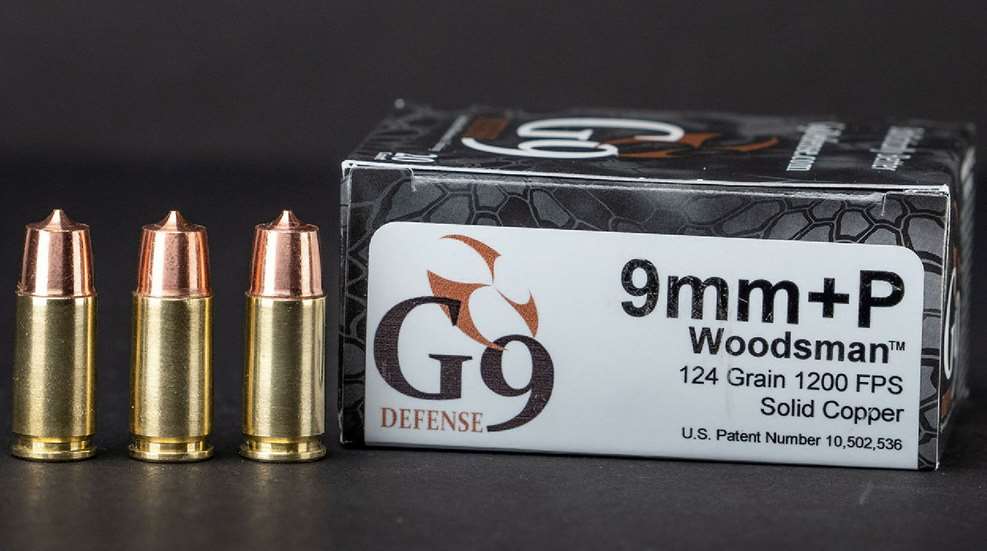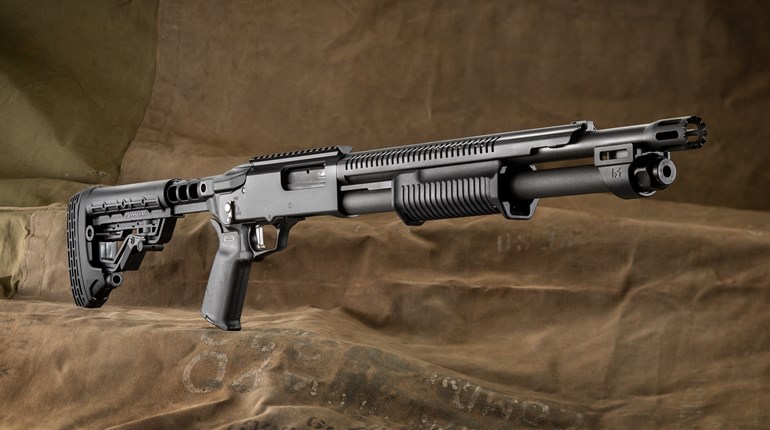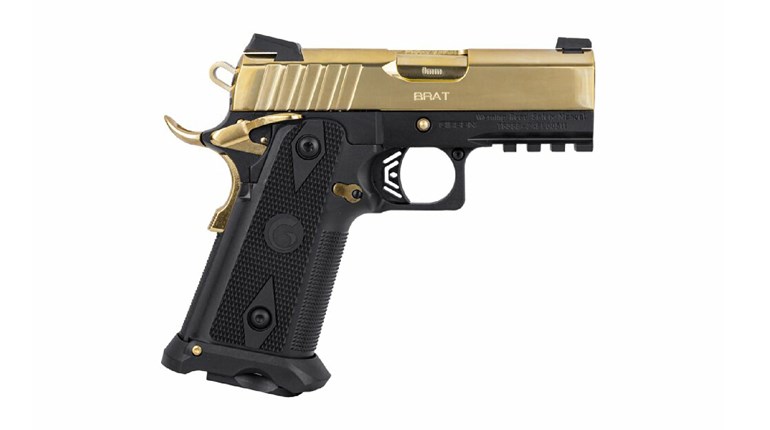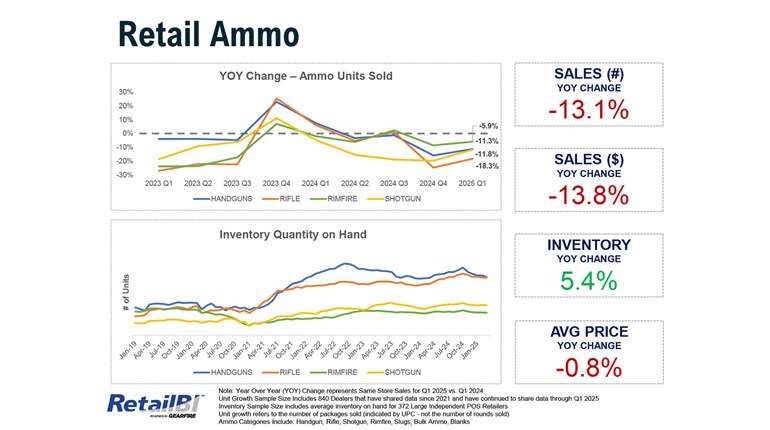
Looking back over the expansive history of ammunition development, it's clear that a tremendous amount of hard work, research and range time has been expended in the quest to boost handgun performance. And for many years, improving that performance has meant an increase in bullet mass, higher bullet velocities, or both, powered by larger or more potent powder charges. Elmer Keith's efforts to throttle up the .44 Special would result in the development of the .44 Magnum revolver cartridge, along with the Smith & Wesson Model 29 to fire it, in the mid 1950s. In the 1980s, Lt. Colonel Jeff Cooper teamed up with Whit Collins to develop a cartridge that would stretch the effective range of a 1911-pattern pistol out to 50-yards. The result of that project was the 10 mm Auto. We can see this same pattern of more-is-more in the development of other big-bore calibers, including the .45 Colt +P, .454 Casull and the .460 S&W Magnum, to name a few. However, over the last couple of decades, we've seen a paradigm shift in handgun ammunition development.
The New Rule: Bullet Design
In recent years, ammunition development has moved away from the old-school practice of making new rounds that are harder hitting than their predecessors. This is due in no small part to butting up against both commercial and statutory limitations. On the handgun hunting side of the isle, the 2003 launch of the Smith & Wesson X-Frame revolver chambered in .500 S&W Magnum brought the most-powerful-handgun-in-the-world race to a decisive end. The cartridge is about as big as you can get before moving into 'destructive device' territory while the revolver's size and weight stretches the practical definitions of a hand-held firearm to the limits. Since revolver bullets can't get bigger, and brass cartridge cases cannot safely handle higher levels of pressure, bullet design is the only direction left to go in order to improve performance.

We've watched this same move away from ramping up power in favor of bullet specialization taking place in the defensive pistol segment of the market. The U.S. military, law enforcement agencies and civilian self defenders have all said they want to stick with 9mm pistols, please. But hey, ammunition makers, could you do us a favor? We would appreciate it if you would stuff the performance potential of larger pistol calibers neatly into 9mm pistols that still hold more ammunition, generate lower levels of felt recoil and cost less to shoot. It took some doing, but those wish has been granted. Today's reputable ammunition makers use an impressive array of modern technology and their many years of experience to style bullets to meet precise performance parameters. The results of this fine tuning is a selection of defensive 9mm hollow point loads that generate results comparable to those of the .40 S&W and .45 ACP while maintaining the cartridge characteristics folks prefer.

The availability of these effective hollow-point loads has worked to make polymer-framed 9mm pistols just that much more popular with folks who engage in a variety of handgun-shooting related ventures. As discussed in this write-up and this one too, this includes the use of 9mm semi-automatics as trail guns as well as for handgun hunting. Rather than rehashing those conversations here, I would invite you to read those previous posts and draw your own conclusions. For the sake of this conversation, let's move forward with the understanding that some folks are going to go the outdoor 9mm pistol route. If so, are the hollow-point bullets configured specifically for threats of the two-legged variety the best choice for defense against dangerous game or potting game for the stewpot?
Founded in 2022 by Joshua Mahnke in northern Idaho, G9 Defense is an ammunition manufacturer which specializes in monolithic copper and brass bullet designs. They currently offer two bullet styles which provide useful alternatives to 9mm hollow points for on the trail or in town. They also offer these bullets in additional caliber options including .40 S&W, .45 ACP, 10 mm Auto and .44 Magnum. Here is a closer look at these bullets along with some range results for five of this company's different loads.

On the Trail: G9 Woodsman Deep Penetration Bullet
The Woodsman load is topped with a unique copper solid designed for maximum penetration and to mitigate deflection or deformation when passing through heavy bone. The wide, flattened nose bullet has a small point in the center and a slightly raised ledge that cuts through soft tissue to form a wider wound channel than a round-nose full-metal jacket or a flat-nosed hardcast bullet. Since over penetration is not as much of a concern when harvesting game or stopping dangerous animals, they did not hold back. When fired into ballistic gelatin, the Woodsman is capable of 34 to 40+ inches, depending on the caliber and handgun used. For this evaluation, I did some shooting with two Woodsman loads including the 9mm 124-grain +P and the 10 mm Auto option topped with a 145-grain projectile.
Back in Town: G9 EHP (External Hollow Points)
What G9 calls their 'external hollow point,' or EHP, is what I have referred to in other evaluations as a fluted copper solid. The 80-grain 9mm and the 95-grain 10mm bullets sent for this evaluation look like they start out as round-nose projectiles. They are then milled with three deep, curving scallops or flutes. The .44 Mag. bullet appears to have a flat meplate before the flutes are cut.

As these bullets travel through the air, the flutes have little if any impact on their flight path. But just like the hollow in a hollow-point bullet, the flutes go to work once they come into contact with soft, fluid-filled materials. As the fluids travel through the narrow flutes they pick up speed. This increase in fluid speed simultaneously creates a decrease in pressure, also known as the Venturi Effect. This causes the fluids to be forced out and away from the churning bullet at speeds that are anywhere from one-and-a-half to two times faster than the bullet's velocity. The result is that fluted bullets can impart disruption comparable to or greater than a hollow-point bullet without the need for bullet deformation.

I observed fluted solids in action for the first time in 2015 during a writer's event held by Inceptor Ammunition to introduce their brand new ARX pistol and rifle projectiles. The light weight ARX bullets are formed by injection molding a hot mixture of epoxy/polymer resin and copper dust. The bullets fall out of the molds with the fluting in place. I participated in the on-site ballistic gelatin testing and, in short, I was impressed by the bullets' performance (you can read more about it here).
Today's ultra-specialized, pistol-caliber hollow points usually require a particular velocity range in order to expand properly. If the bullet is traveling too slowly, it can fail to expand resulting in over penetration and a less effective target disruption. If it’s flying along too quickly, it can expand too rapidly resulting in shallow penetration. And if the bullet's hollow becomes plugged up with cloth or some other material, it may not expand which, once again, results in over penetration.

What I've seen with the fluted solids is that they are, for lack of a better term, not as 'velocity sensitive' as hollow points. When fired at pistol velocities into gel, they yield effective results. They punch right through thick clothing and barrier materials and are still effective since they do not rely on bullet deformation for energy transfer. And as bullet velocities increase, the cavitation effects become more pronounced. In other words, whereas a hollow point may expand too quickly when fired from a pistol-caliber carbine, a fluted pistol bullet has the potential to be even more effective.

I mentioned the ARX here because the G9 EHPs operate using the same principles. However, they are fundamentally different in that the ARX in two ways. First, the ARX is frangible bullet. The poly-copper resin matrix fractures in soft tissue or fragments into small pieces when impacting hard targets so as to avoid ricochets. The solid copper EHP is specifically designed so that it will not deform or fragment when it encounters soft or hard target materials. Although frangibles certainly have their place, the EHP is a better fit for the situations discussed here. Secondly, the EHP bullets utilize an in-house fluting configuration. In fact, if you look at the close-up photo, the fluting is uniquely configured for each caliber.

At The Range
Since I'm sold on G9's bullet designs and the data that supports them, all I really needed at this point was to see them in action using three of the guns I had on hand. For the 9mm loads, I broke out the classy polymer-framed 4.6-inch barrel Century Arms Canik TTI Combat. We recently posted a review of the EAA Witness2311 10mm Hunter. Since it was already oiled up, sighted in and a hoot to shoot, it was put to work testing the two 10mm Auto rounds. The .44 Mag. EHP load is brand new for 2025 and does not have a companion Woodsman load. But based on the performance numbers when fired from the 5.12-inch ported barrel of the Fink's Custom Taurus Raging Hunter, it looks like this round can comfortably do what you need it to do.

Formal bench-rested accuracy testing was conducted at 25-yards by firing three, 3-shot groups for each load using red-dot optics mounted to each of the guns. A LabRadar LX chronograph was on hand to measure the average bullet muzzle velocities for 10-shot strings. All of the loads functioned flawlessly without any mechanical or ammunition-related issues throughout the course of testing.
G9 Defense ammunition has a reputation for reduced levels of felt recoil due to the lighter bullet weights. This proved to be the case. Recoil was on the moderate side for four of the loads tested. The one exception was the 124-grain 9mm +P Woodsman. It was right on par with other +P rounds with this bullet weight, which is to say a bit peppy but still comfortable to shoot. As for the accuracy, group sizes with the G9 ammunition were comparable to those produced when firing typical practice and defense-grade loads from these handguns. Once again, the 9mm Woodsman load stood out from the crowd with impressive sub 2-inch groups. Here is the complete set of range results:

Parting Shots
What can we expect to see in the way of new and exciting calibers and handguns for outdoor enthusiasts in the future? I can't say for certain since I buy my crystal balls and divining rods as the same online distributors as everybody else. But for the time being, it seems bullet design is more likely to be a driving force in the market place than the introduction of new handgun cartridges. G9 Defense's line-up of monolithic metal bullets is a part of that specialized bullet movement. This ammunition has proven to be reliable and accurate in my evaluations so far. I'm looking forward to working with it more in the future. Although hollow points are going to keep ruling the defensive pistol roost, the G9 offerings are an effective alternative when expanding bullets are not the best fit. For more information, visit g9defense.com.




































